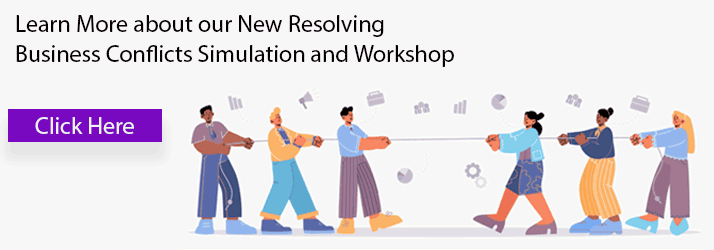Any professional or amateur athlete will tell you that the most frustrating thing in the entire world is the dreaded “unforced error.” An unforced error is a mistake attributed to your own failure or mistake rather than the skill or effort of a competitor or opponent.
dreaded “unforced error.” An unforced error is a mistake attributed to your own failure or mistake rather than the skill or effort of a competitor or opponent.
In tennis, you could hear, “She made 88 unforced errors, including a double fault on match point to lose the match.” In business you could hear, “How can he portray himself as an emerging leader when he makes that sort of unforced error like constantly criticizing people and never embracing the power of coaching people for success?”
In the business world, these types of mistakes can be all too common, and they can completely derail success and business results.
During the past year, I have had the unique opportunity of writing several large business simulations in the areas of Coaching and Feedback, Resolving Business Conflicts, Executing Strategy, and Creating an Environment of Psychological Safety. The goals of these simulations are to provide an opportunity for leaders to practice new skills and learn by doing so they make mistakes in the simulated environment and not in the real world.
During the creation of these simulations, I interviewed hundreds of leaders to get their stories and best practices. The number of unforced errors that were cited in the stories I gathered was astounding.
One Sales Leader I interviewed shared an experience and reflection of a story that was quite revealing. The Sales Leader is in the software-as-a-service (SaaS) business. One of the biggest issues he faces is migrating their customers from legacy enterprise solutions to newer cloud-based solutions. He shared the story of a customer complaint about one of his Sales Professionals and the unforced errors he made in handling the situation. The customer called the Sales Manager outraged sharing that she had left the Sales Professional who handles her account several messages about getting a quote to migrate her system to the cloud. A few days went by, then a weekend, and another couple of days without a response. Finally, the customer called the Sales Manager to complain and wonder if the company still cared about her business. The Sales Manager shared that he made his Sales person’s unforced errors even worse by making excuses and actually lying to the customer by saying that the quote was actually prepared but got “stuck in our outbox.” Needless to say, they lost the business.
To further compound the unforced errors, instead of providing coaching and feedback to the Sales Professional on how and why not to do that again, the Sales Manager yelled and screamed in an unprofessional manner at the Salesperson and came very close to firing the person on the spot even though they were a consistently productive worker. The relationship soured and just a couple of months later the Sales Professional quit and took a job with a competitor.
This scenario has become one of the core scenarios in a custom business simulation we created for a client. One of the coolest things about the approach is that we are able to track data and follow up on the simulation. For example, more than 80% of the participants going through the simulation say they feel more confident doing the best practice of having a positive coaching conversation with the Sales Professionals and being transparent with the customer than they were before the simulation.
In other words, the experience of going through and learning from the scenario is changing the behaviors of the organization at the same time it is reducing unforced errors. In the long run, reducing unforced errors in leadership will result in much better business results.




